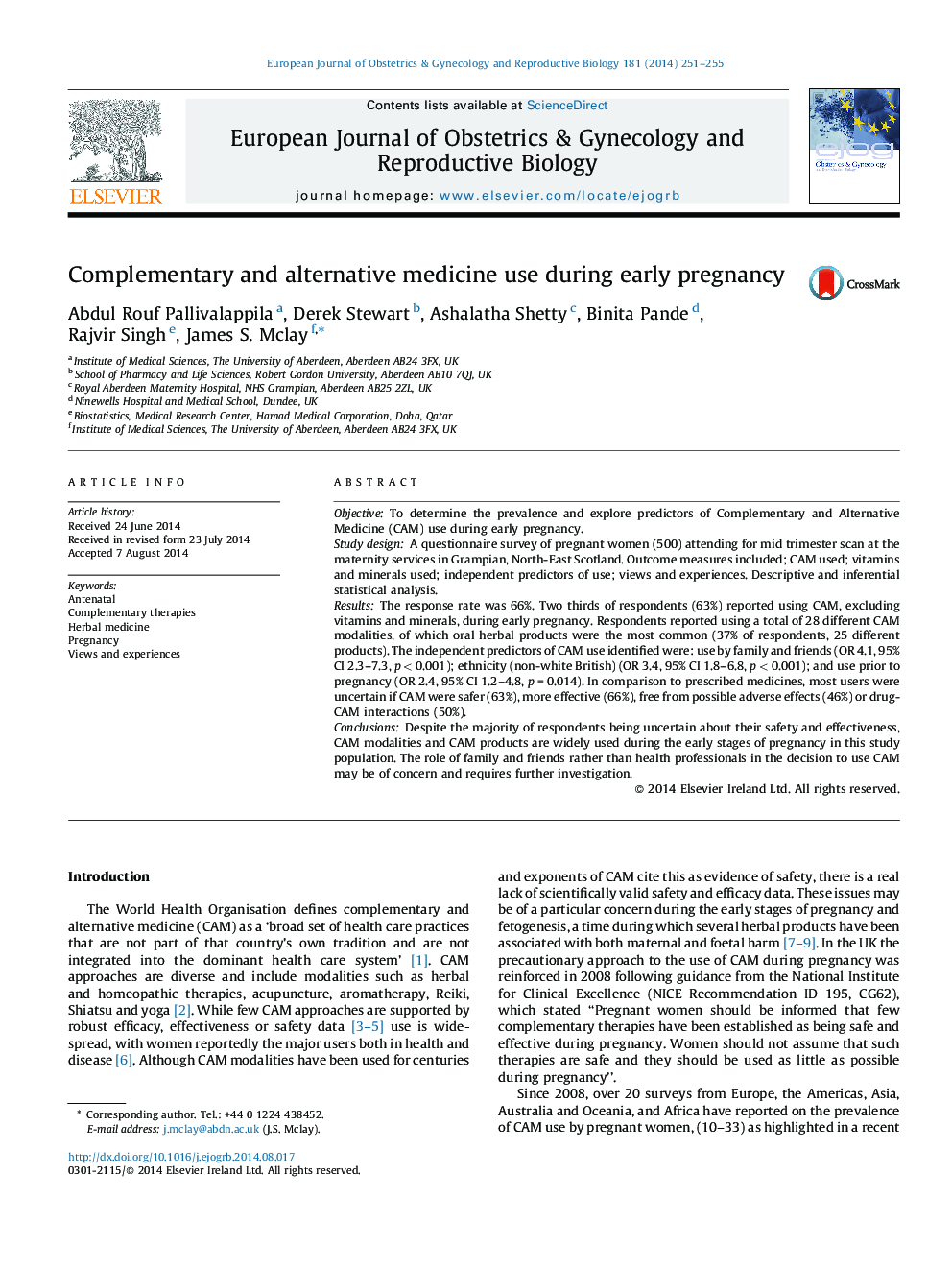| Article ID | Journal | Published Year | Pages | File Type |
|---|---|---|---|---|
| 6173294 | European Journal of Obstetrics & Gynecology and Reproductive Biology | 2014 | 5 Pages |
ObjectiveTo determine the prevalence and explore predictors of Complementary and Alternative Medicine (CAM) use during early pregnancy.Study designA questionnaire survey of pregnant women (500) attending for mid trimester scan at the maternity services in Grampian, North-East Scotland. Outcome measures included; CAM used; vitamins and minerals used; independent predictors of use; views and experiences. Descriptive and inferential statistical analysis.ResultsThe response rate was 66%. Two thirds of respondents (63%) reported using CAM, excluding vitamins and minerals, during early pregnancy. Respondents reported using a total of 28 different CAM modalities, of which oral herbal products were the most common (37% of respondents, 25 different products). The independent predictors of CAM use identified were: use by family and friends (OR 4.1, 95% CI 2.3-7.3, p < 0.001); ethnicity (non-white British) (OR 3.4, 95% CI 1.8-6.8, p < 0.001); and use prior to pregnancy (OR 2.4, 95% CI 1.2-4.8, p = 0.014). In comparison to prescribed medicines, most users were uncertain if CAM were safer (63%), more effective (66%), free from possible adverse effects (46%) or drug-CAM interactions (50%).ConclusionsDespite the majority of respondents being uncertain about their safety and effectiveness, CAM modalities and CAM products are widely used during the early stages of pregnancy in this study population. The role of family and friends rather than health professionals in the decision to use CAM may be of concern and requires further investigation.
